Written by Kate Tietje
It’s no secret that I’ve been brewing kombucha for many years. It was one of the first “real food” projects I took on and one I’m still doing now (although I do buy it, too).
I even put together a video on how to brew kombucha and an ebook about it a couple of years ago. (You can get that ebook for FREE when subscribing to my weekly feed.) Here’s the video:
At the time, I wasn’t sure about the continuous brew method of kombucha. I hadn’t tried it and assumed it would be less beneficial. So, I recommended against it.
More recently, I’ve come across new information that’s made me rethink that stance. I now have a nice ceramic continuous brew crock sitting in my kitchen! This was sent to me courtesy of the Get Kombucha company, which offers kombucha kits (continuous brew and batch brew). They seem to prefer the continuous brew method.
Let’s look at how they differ…and why you might be better off choosing continuous.
Kombucha: Batch Brewing Vs. Continuous Brewing
My main criticism of the continuous brew method two years ago was that by constantly adding new sweet tea to already-fermented tea, you would end up with a sugar content that was too high.
As it turns out, this is probably false. This is why it’s so important to research things instead of assuming based on what “seems” like common sense!
Batch Brewing
With batch brewing, mix sweet tea with already fermented kombucha, add a SCOBY, and allow it to sit for a week or two. Most people probably like it around 8 – 10 days, give or take a few. This is just as described in the video above (which is why I’m glossing over it).
At the end of the brew cycle, all the kombucha is bottled (except 1/2 – 1 cup to get the next batch going), plain or with some flavoring. If flavors are added, the bottles are left to ferment and sealed for another 2 – 3 days before being refrigerated. Then, the kombucha is restarted in the same manner.
Pros:
- All the work at once, then no tending required for a week or more
- Jars can be cleaned out regularly
Cons:
- Have to wait several days for more kombucha to be ready if you run out
- Not all (or even much) of the sugar is consumed during the relatively short ferment
- Messy and time-consuming to bottle quite a lot at once (4 gallons takes me 40 – 60 min.)
Continuous Brewing
In contrast, continuous brewing is like it sounds — constant. It starts the same way, by mixing sweet tea with already fermented kombucha and adding a SCOBY. Initially, it must sit for about a week, give or take. But here’s where it differs.
About 20 – 30% of the kombucha is drawn off via a spigot. It can be drawn directly into bottles, with a bit of flavoring (if desired) added, or it can be drawn straight into a cup for consumption. Then, an equivalent amount of sweet tea is added to the crock, and fermentation continues. The SCOBY is never removed, and most kombucha isn’t disturbed.
Once the brew has been going for a while, you can draw off up to 20% every 3 – 4 days (most do it more like every 7), always replacing it with sweet tea. The crock is only drained twice a year for cleaning; otherwise, there is always kombucha fermenting.
Pros:
- Kombucha is (almost) always available
- Bottling is simple and non-messy; use the spigot
- A small amount can be produced at once or a greater amount (depending on how often you choose to bottle)
- Beneficial acids develop once the kombucha has been fermenting for 3 – 4 weeks and aren’t present in “younger” brews
- Mold is highly unlikely because there is such a high percentage of well-fermented kombucha
- New sweet tea + well-fermented kombucha = balance between sweet and sour; good flavor and health benefits
- Many find that there is better carbonation, better flavor, and more consistent brew
Cons:
- A large crock can take up quite a bit of space (they are usually 2 – 5 gallons)
- It can produce so much kombucha that it’s hard to keep up with
- Requires attention every 4 – 7 days
So, it’s up to you what you want to try. I’m excited to be foraying into the continuous brew method now. I think it will better fit the stage of life we are in now. We are busier, and having five minutes here and there is more likely than a full hour every couple of weeks to devote to something. It used to be easier the other way, but things changed.
Here’s the SCOBY I got with my continuous brewing kit from Get Kombucha (they sent me their silver kit):
How Kombucha Saves Money…and Other Ways to Save
Have you ever priced a bottle of store-bought kombucha?
I’ve been buying it more often than I should lately, as I’ve been between systems and haven’t had my own brew. But yikes, it’s expensive, and I need to quit that. A store-bought bottle is typically $3 – $4 for 16 ounces. Yeah.
At home, I can brew a gallon for around $1. Yes, a full gallon for $1! That makes it a super, super frugal option. I buy organic tea and organic sugar in bulk for kombucha brewing (and the occasional fun treat of plain old sweet tea).
Fermented foods, like kombucha (water kefir, milk kefir, sourdough, etc.), greatly increase your family’s nutrition. Yet, if you can find them at the store, which is difficult, they are very expensive. A good quality loaf of true sourdough bread is around $5. Who has that kind of money to spend on bread? Meanwhile, you can make a loaf for $1 or so (depending on the ingredients. A simple loaf that uses flour, salt, and water will be cheaper than one that uses milk, eggs, butter, and honey.
I really feel good about including these nutrient-dense, homemade foods in my family’s diet. I know I’m saving money while providing the highest quality I can.
This was the premise of a book I recently contributed to called Frugal Secrets of Real Foodies. In it, you’ll find lots of budget-saving tips, plus recipes for water kefir, sourdough bread, and lots of other frugal, healthy foods.

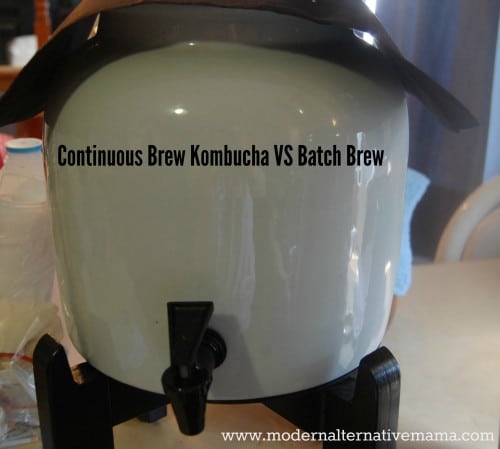
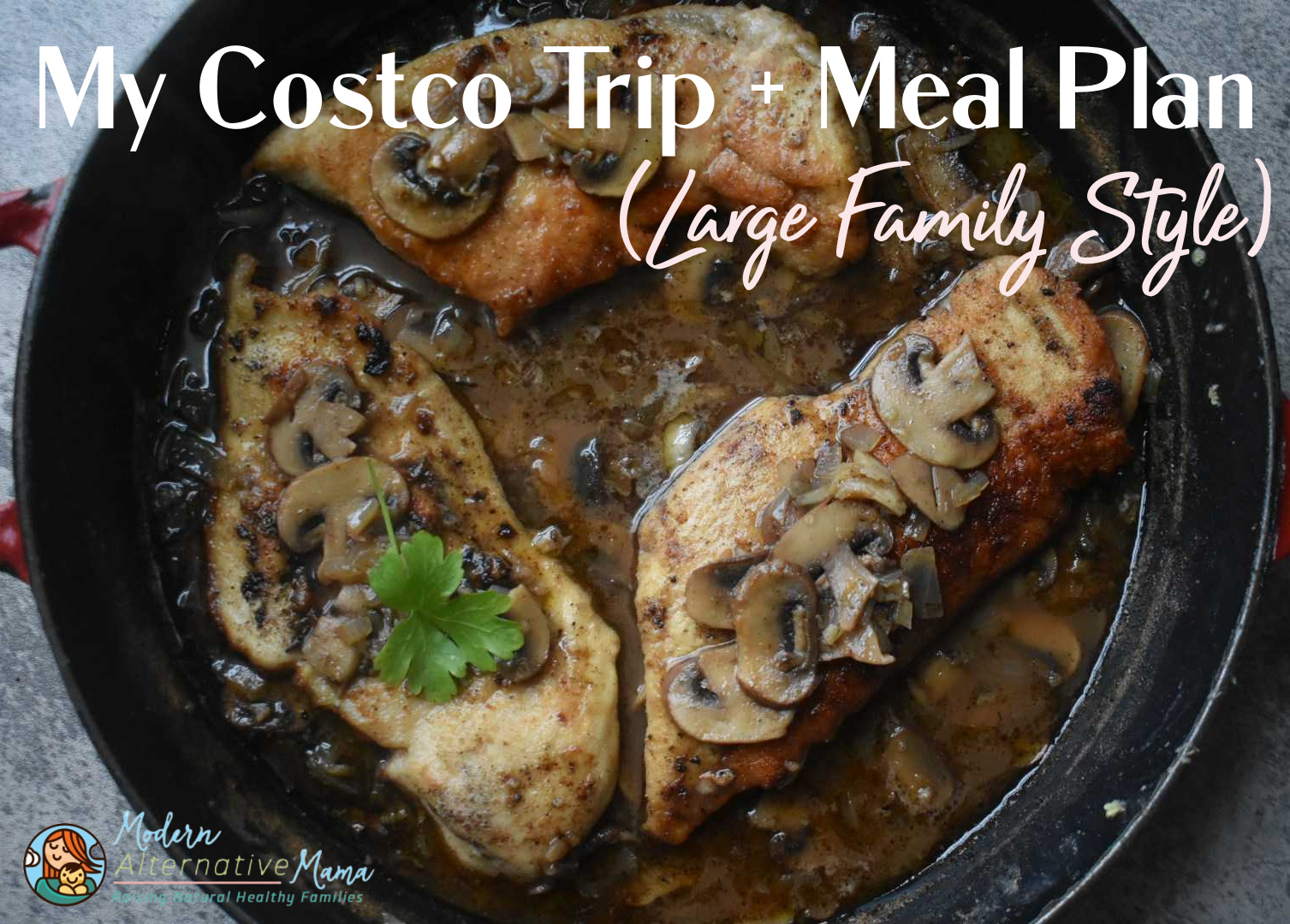
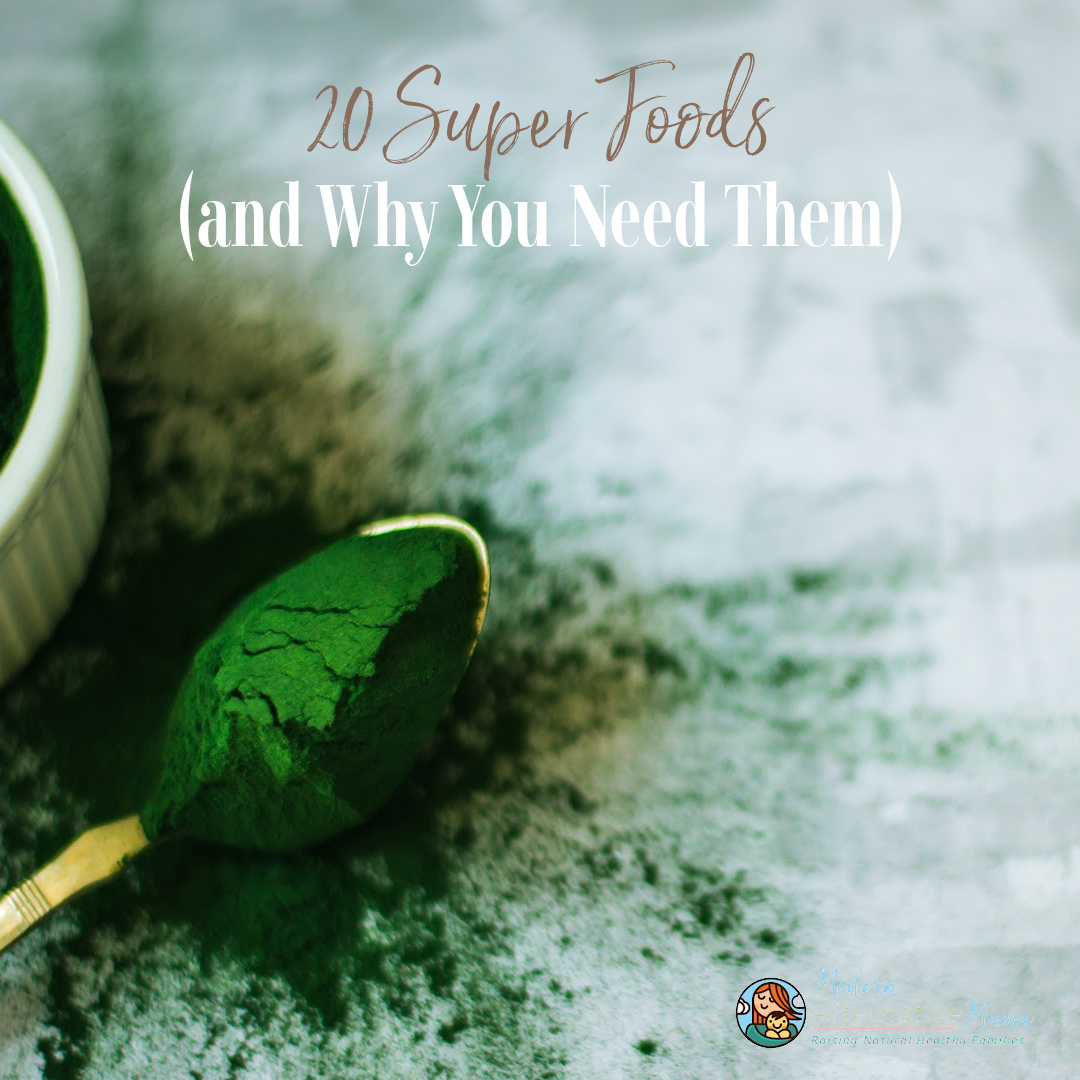
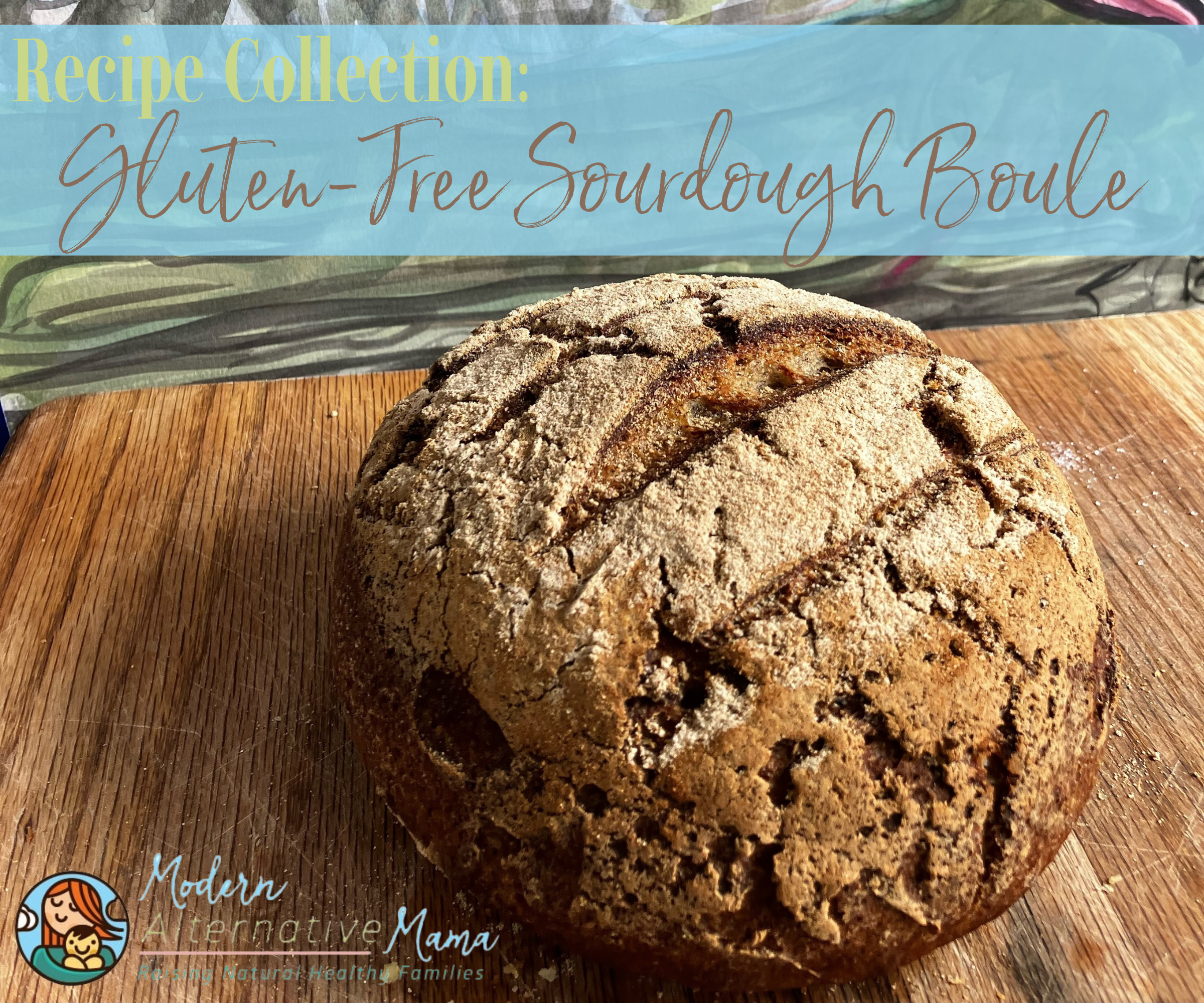
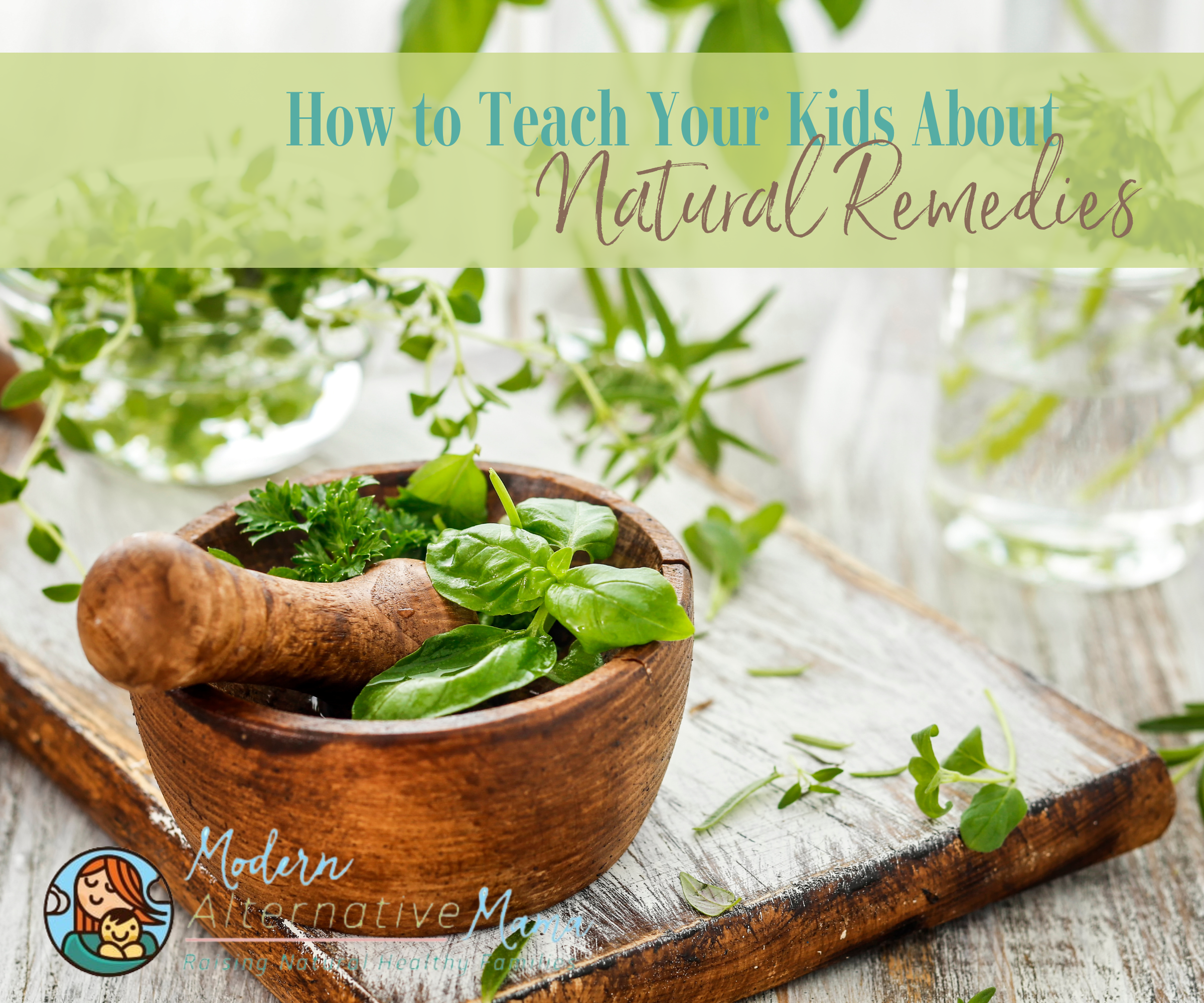

[…] Read more here: Recipe Collection: Continuous Brew Method Kombucha | Modern … […]
[…] Continuous Brew Kombucha vs Batch Brew @ Modern Alternative Mama […]
I have a question concerning kombucha and candida. There are conflicting views. I like your blog and you seem to be very balanced and reasonable so I would value your thoughts and/or opinions about this subject.
Hi Melissa,
The controversy comes because candida is a type of yeast, and kombucha also contains certain strains of yeast (not candida). Some people believe that all yeast, in all strains/forms should be avoided if you are on an anti-candida diet. Others believe that because the strains are different, that the beneficial strains of yeast in kombucha can help to fight the candida.
Ultimately, you need to see if works for you. I would certainly not agree that *no one* with yeast issues should drink kombucha. But a few people may show cross-reactivity (i.e. if they have a candida issue, consuming other types of yeast may cause further problems). You won’t know which you are unless you try. I know that my husband, who struggles with candida, does better with kombucha than without.
I hope that helps!
[…] If you’re curious about the benefits and drawbacks of both batch brewing and continuous brewing, check out this post. […]